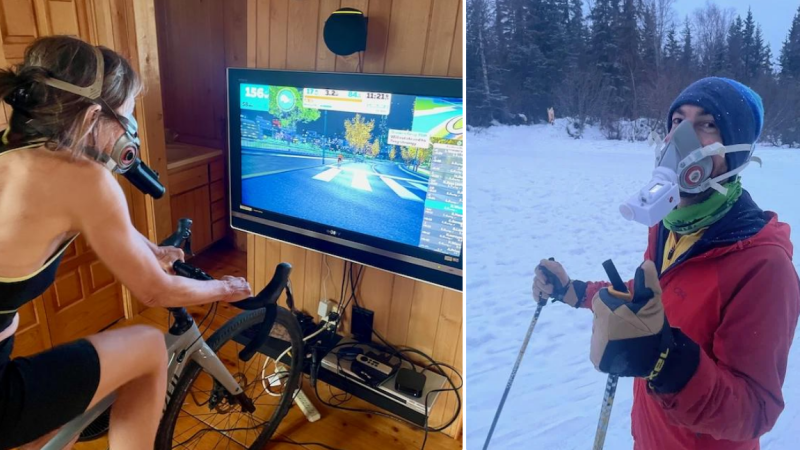We’re currently in the midst of New Year’s Resolutions season, which means an abundance of spanking new treadmills and exercise bikes. And one thing becomes quickly obvious while using those machines: the instruments on them are, at best, only approximately useful for measuring things like your pulse rate, and in the case of estimating the calories burned by your workout, are sometimes wildly optimistic.
If precision quantification of your workout is your goal, you’ll need to monitor your “VO2 max”, a task for which this portable, printable mask is specifically designed. This is [Robert Werner]’s second stab at a design that senses both pressure differential and O2 concentration to calculate the maximum rate of oxygen usage during exercise. This one uses a commercially available respirator, of the kind used for painting or pesticide application, as the foundation for the build. The respirator’s filter elements are removed from the inlets to provide free flow of air into the mask, while a 3D printed venturi tube is fitted to its exhaust port. The tube houses the pressure and O2 sensors, as well as a LiPo battery pack and an ESP32. The microcontroller infers the volume of exhaled air from the pressure difference, measures its O2 content, and calculates the VO2 max, which is sent via Bluetooth to a smartphone running an exercise tracking app like Zwift or Strava.
[Robert] reports that his $100 instrument compares quite well to VO2 max measurements taken with a $10,000 physiology lab setup, which is pretty impressive. The nice thing about the design of this mask is how portable it is, and how you can take your exercise routine out into the world — especially handy if your fancy exercise bike gets bricked.
















Wow! I just bought a pair of these exact 3M masks for some dusty jobs. Glad to hear they have uses beyond just home improvement.
Indeed, andvthey’re good for COVID-19 too: I have a Honeywell RU65005M for that purpose, I just took out the front nozzle cover, cut a piece of material from a cheap dust filter-mask, placed that over the exhaust opening, then put the nozzle cover back on. Add some P3 filters for the inlets and you’re set.
Works much better than the “surgical” and cloth masks (better filtration, easier to breathe through), better for the environment (reusable), and doesn’t reward the CCP for a problem they unwittingly helped create.
No reason a similar approach could be used here too.
I was lucky enough to get one of these right when the pandemic started two years ago, and it’s been the gift that keeps on giving since then, both for COVID and for wildfire smoke. The P100 filters are reusable and better than N95’s, and the straps encourage an air-tight fit that you don’t get with ordinary masks. The only problem is the exhaust isn’t filtered, but you could cover the front vent with a surgical mask, and some people were making attachments like this one to improve the fit. Maybe something to look at for future improvements?
I also own two of them, mainly for protecting myself against organic solvents, or cypress pollen.
For the COVID be aware that these apparatus filter only incoming air, not the air you exhale ! So if you are sick, you will disseminate the virus. So for other’s health, you may consider using a N95 rated mask… their filter in both ways.
Stay safe, and protect others !
As I say, depends on the design… in this case, if you can install a oxygen sensor into the outlet port, there’s no reason why a filter couldn’t be installed there too.
Funny times we live in, three years ago if I walked into a hardware store wearing gasmask the clerk would pull a knife on me assuming I’m about to rob him. Nowdays he will use a tazer if I’m not wearing a mask. The profit of all this is I get to grab some useful tools and all those CCTV recordings are next to useless.
This is cool! I wonder – as someone who uses a CPAP machine nightly, I think some CPAP hose could be used to make it belt-wearable, which would take some of the weight off your chin, if weight is a concern.